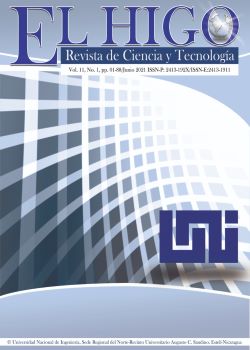Diseño de alcantarilla para el paso de organismos acuáticos: un enfoque ambiental
DOI:
https://doi.org/10.5377/elhigo.v11i1.11709Palabras clave:
Ríos, alcantarilla, paso de peces, ambienteResumen
El diseño de las alcantarillas en el cruce de carreteras y corrientes de agua como quebradas o ríos, se ha basado tradicionalmente en los requisitos hidráulicos de seguridad para la carretera. Con esta concepción del diseño de alcantarilla se ha dejado sin consideración los elementos biológicos de la corriente de agua, tal como los peces y otros organismos acuáticos, los cuales son parte esencial del ecosistema y que ha sido alterado por una barrera física que es la alcantarilla. Incluso, algunos factores físicos también son alterados, como la erosión o deposición de sedimentos y detritos, los cuales cambian igualmente las condiciones ambientales para los peces, dando como resultado, barreras que le impiden el desarrollo natural de su ciclo de vida, y ponen en peligro su reproducción. Pensando en el diseño amigable con el medio ambiente, se han desarrollado conceptos y lineamientos para el diseño de alcantarillas de cruce de carreteras y corrientes de agua, que faciliten el pase de los organismos acuáticos a través de la alcantarilla, de modo que estos puedan tener movilidad de la misma forma que en la corriente natural. En este escrito se presentan algunos lineamientos para el diseño de alcantarillas de forma amigable con el medio ambiente, los que son abordados por Kilgore et al (2010), Schall at al. (2012), Bates y Kirn (2009), Henrik et al (2019), Kozarek y Mielke (2015), Olson et al (2017) y Departamento de Pesca y Vida Silvestre de Vermont (2016).











